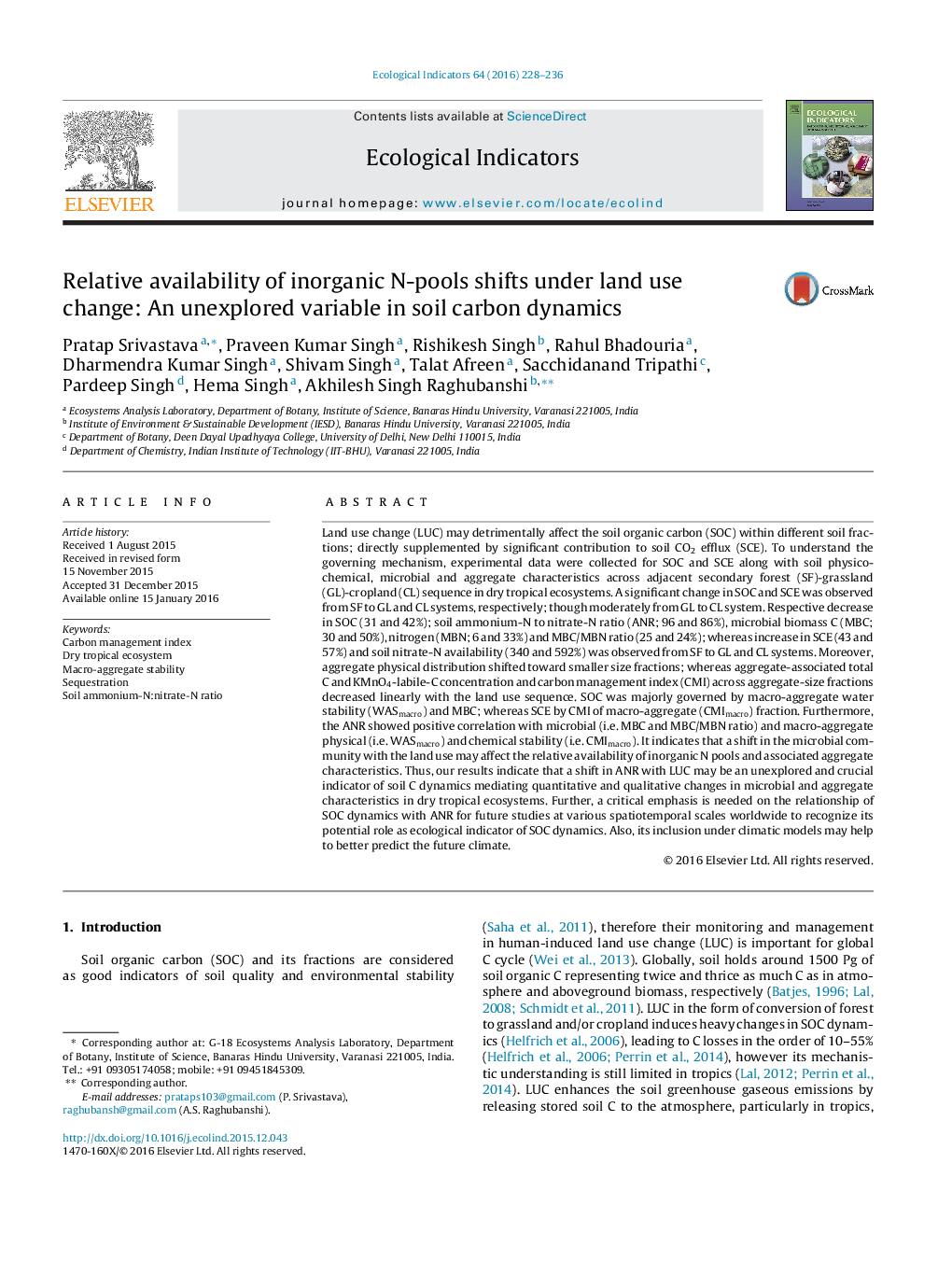| Article ID | Journal | Published Year | Pages | File Type |
|---|---|---|---|---|
| 4372953 | Ecological Indicators | 2016 | 9 Pages |
•Soil microbial and aggregate properties are linked by ammonium to nitrate ratio (ANR).•Land use change (LUC) affects soil carbon dynamics mediating ANR.•Water stability and CMI of macro-aggregate primarily define SOC dynamics.•Change in SOC and soil CO2 efflux with LUC relates to shift in aggregate dynamics.•LUC variably affects the C characteristics across aggregate size fractions.
Land use change (LUC) may detrimentally affect the soil organic carbon (SOC) within different soil fractions; directly supplemented by significant contribution to soil CO2 efflux (SCE). To understand the governing mechanism, experimental data were collected for SOC and SCE along with soil physico-chemical, microbial and aggregate characteristics across adjacent secondary forest (SF)-grassland (GL)-cropland (CL) sequence in dry tropical ecosystems. A significant change in SOC and SCE was observed from SF to GL and CL systems, respectively; though moderately from GL to CL system. Respective decrease in SOC (31 and 42%); soil ammonium-N to nitrate-N ratio (ANR; 96 and 86%), microbial biomass C (MBC; 30 and 50%), nitrogen (MBN; 6 and 33%) and MBC/MBN ratio (25 and 24%); whereas increase in SCE (43 and 57%) and soil nitrate-N availability (340 and 592%) was observed from SF to GL and CL systems. Moreover, aggregate physical distribution shifted toward smaller size fractions; whereas aggregate-associated total C and KMnO4-labile-C concentration and carbon management index (CMI) across aggregate-size fractions decreased linearly with the land use sequence. SOC was majorly governed by macro-aggregate water stability (WASmacro) and MBC; whereas SCE by CMI of macro-aggregate (CMImacro) fraction. Furthermore, the ANR showed positive correlation with microbial (i.e. MBC and MBC/MBN ratio) and macro-aggregate physical (i.e. WASmacro) and chemical stability (i.e. CMImacro). It indicates that a shift in the microbial community with the land use may affect the relative availability of inorganic N pools and associated aggregate characteristics. Thus, our results indicate that a shift in ANR with LUC may be an unexplored and crucial indicator of soil C dynamics mediating quantitative and qualitative changes in microbial and aggregate characteristics in dry tropical ecosystems. Further, a critical emphasis is needed on the relationship of SOC dynamics with ANR for future studies at various spatiotemporal scales worldwide to recognize its potential role as ecological indicator of SOC dynamics. Also, its inclusion under climatic models may help to better predict the future climate.
Graphical abstractFigure optionsDownload full-size imageDownload as PowerPoint slide
